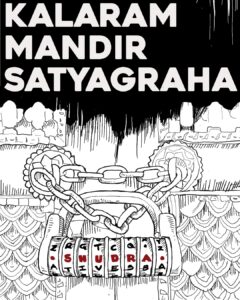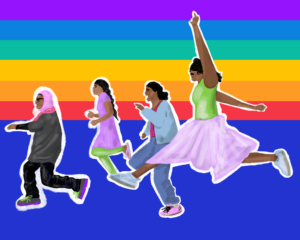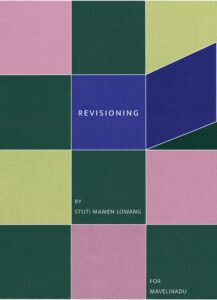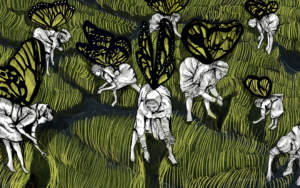The celebration of Holi is the celebration and legitimisation of the routine violence and caste atrocities against Dalit women. The fact that it continues nationwide to this day is shameful and cruel, and nothing other than a publicly sponsored atrocity against Dalit women communities.

Illustration by Ajinkya Dekhane
Holika Dahan or the ‘Burning of Holika’ is a Hindu occasion that celebrates the legend of Holika and Prahlad. The burning of pyres and bonfires on the eve of the Hindu festival of colours, Holi symbolises the burning of Holika, a Dalit (asura) woman in an ancient myth.
The festivities of Holi are closely linked with the story of Hiranyakashipu. Hiranyakashipu was an Asura king of the daityas in the Puranic scriptures of Hindusim. According to the myth, after Hiranyakashipu's younger brother Hiranyaksha's death at the hands of the Varaha avatar of Hindu lord Vishnu, Hiranyakashipu comes to resent Vishnu. Narasimha is considered another avatar or form of Vishnu. Hiranyakashipu's son Prahlad had realised his ‘one true god’ in Narasimha and proved himself as an ardent devotee of Vishnu. This enraged Hiranyakashipu, who began to obsessively plot the murder of his son Prahlad. After many failed attempts to do so, he decided to employ his sister Holika for this job. Holika draped herself with a fire-resistant boon and sat in a bonfire with her nephew Prahlad in her lap. Prahlad’s prayers to Narsimha ensured that he was safe from the deadly flames, while Holika burnt.
In the Brahmanical tellings of this tale, the asuras are villainised and the saving of Prahlad is narrated as a ‘battle between good and evil’, wherein the Hindu God Vishnu denotes almighty goodness while the asuras are labelled as evil. Vedic and Puranic stories which dictate Hindu festivals count on the repression of the lives and stories of the Bahujan and caste-oppressed folks that have been written into Brahmanical tales. Moreover, the existence of Holi finds its origins in a celebration of the burning of Holika; a Dalit woman, which is cruelly romanticised and glorified with colours.
The story of Holika is intrinsically linked to the continuing oppression of Dalit women in a country that celebrates the murder, subjugation of and violence against Dalit women by the means of Holi. Even today, ‘witch hunting’ practices by oppressor-caste communities legitimise the social exclusion and boycott of Dalit women which even extend to Dalit women being burnt alive on ‘suspicion of witchcraft.’
The celebration of Holi is the celebration and legitimisation of the routine violence and caste atrocities against Dalit women. The burning of pyres and play of colours in the modern day is directly oppressive to Dalit women. The fact that it continues nationwide to this day is shameful and cruel, and nothing other than a publicly sponsored atrocity against Dalit women communities.
Sources:
B.R. Ambedkar – Dr. Babasaheb Ambedkar, Writings and Speeches: Vol. 17 Part 3
Kancha Illaiah – Why I am not a Hindu
Jotiba Phule – Gulamgiri




